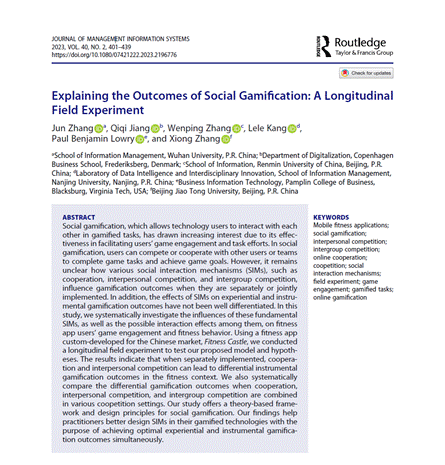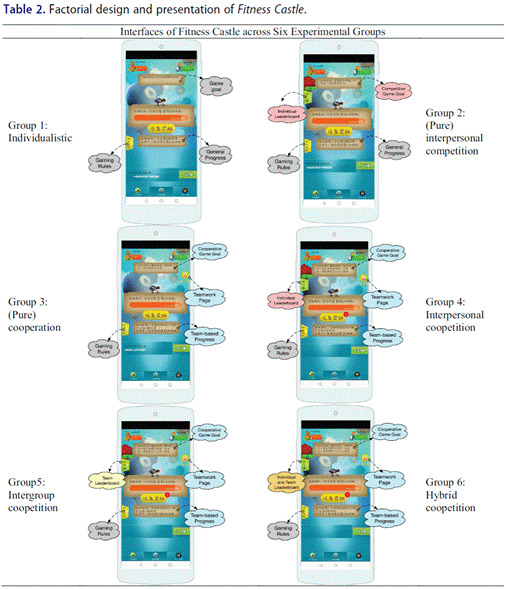Recently, Jun Zhang, Associate Professor at our School, published Explaining the Outcomes of Social Gamification: A Longitudinal Field Experiment in Journal of Management Information Systems (JMIS), a top journal in the field of management information systems, to explore the application of social gamification in e-health.
Co-authors of this article were as followings:
Qiqi Jiang, Associate Professor in the Department of Digitalization at Copenhagen Business School,
Wenping Zhang, Associate Professor in School of Information, Renmin University of China,
Lele Kang, Associate Professor of Information Management and Information Systems in School of Information Management, Nanjing University,
Paul Benjamin Lowry, the Suzanne Parker Thornhill Chair Professor in Business Information Technology at the Pamplin College of Business at Virginia Tech,
Xiong Zhang, Associate Professor in the Department of Information Management at Beijing Jiao Tong University.

Social gamification refers to the application of game design elements and social interaction mechanisms (SIMs) to non-game task contexts, such as online learning platform, e-commerce platform, fitness apps (fitApps) and so on. In social gamification, game design elements usually include storytelling, role playing, points, badges, and level-ups, etc., while social interaction mechanisms (SIMs) include interpersonal competition, intergroup coopetition, intergroup competition, and hybrid coopetition (cooperation + interpersonal competition + intergroup competition). Under the joint action of game design elements and SIMs, the information system based on social gamification has two expected effects, namely, experiential outcomes (game-layer outcomes) and instrumental outcomes (nongame-layer outcomes). Experiential outcomes are primarily related to the experience of playing the game, and they include users’ game engagement, enjoyment, curiosity, and satisfaction. Instrumental outcomes reflect users’ task efforts toward or performance in completing the instrumental tasks behind the gamified application (e.g., learning outcomes, job performance, and training effectiveness).
This article focuses on exploring the internal influence mechanism of social gamification design to improve user experience and promote users' healthy behavior. Based on a fitness app custom-developed for the Chinese market, Fitness Castle, this study conducted a longitudinal field experiment to test the influence of different social mechanisms on the experiential outcomes and instrumental outcomes of social gamification. 541 participants were randomly distributed into six different social gamification contexts (as shown in the following table), and used the fitness apps with different SIMs for 63 days, and got data of 541 participants × 63 days , including users’ daily steps and daily app engagement. The experimental result shows that SIMs such as interpersonal competition, intergroup coopetition, intergroup competition, and hybrid coopetition have different effects on the experiential outcomes and instrumental outcomes of social gamification. Specifically, in the absence of competition mechanism, cooperation mechanism can promote the experiential outcomes of app, but the instrumental outcomes (daily steps) of app is reduced due to social slack. However, in the hybrid coopetition group where cooperation, interpersonal competition and intergroup competition coexist, the experiential outcomes (daily game engagement) and instrumental outcomes (daily steps) of app have reached the overall optimum. Based on the above findings, this study systematically interprets the influence mechanism of user behavior in social gamification, which has significant guiding significance for the industrial application and design of social gamification.

Journal of Management Information Systems, together with MIS Quarterly and Information Systems Research, are recognized as three international high-level journals in the field of information systems, A level journal in the FMS Journal Rating Guide (Federation of Management Societies of China), and one of the top 50 journals (FT-50 journals) in the field of economy and management rated by Financial Times.
Links to the article: https://doi.org/10.1080/07421222.2023.2196776